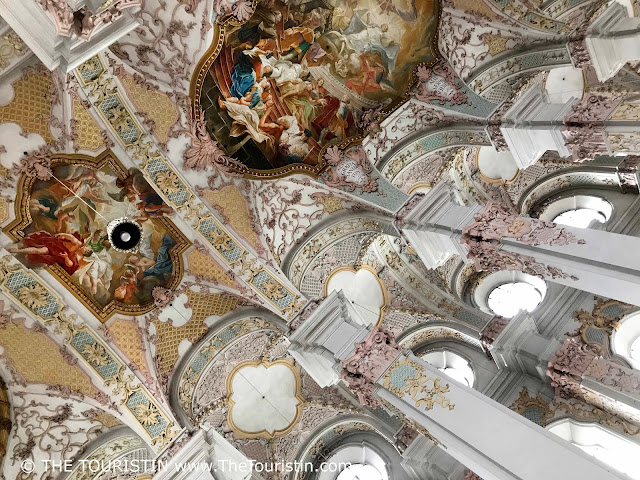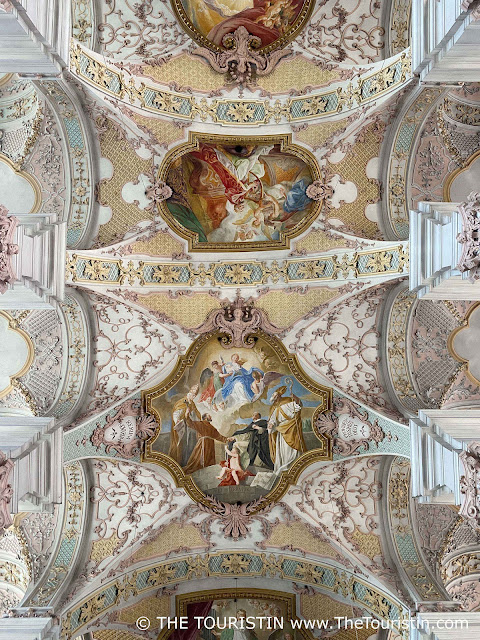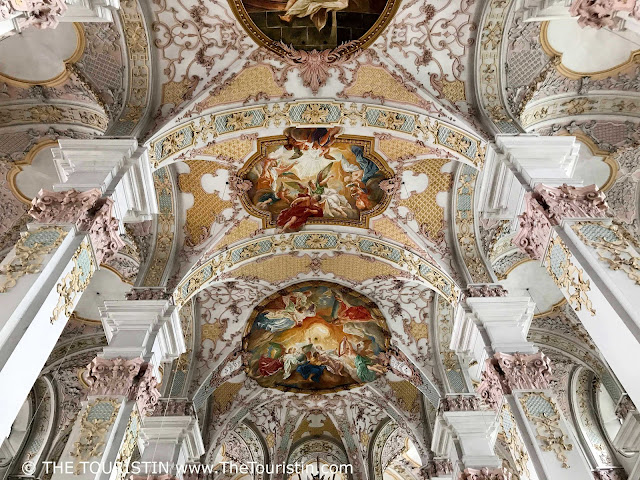Everybody loves Munich because it is, without a doubt, one of the prettiest towns in the world. People love Munich for its beer gardens, for its beer, for its food, for its friendly people, for its lovely weather, for the English Garden and for the Oktoberfest.
Why would a tourist want to visit churches while in Munich? Why not? In winter, Munich’s churches give you shelter from the cold, and, in summer, during a heatwave, they protect you from the sun. Churches tell you a lot about the history of Munich, where were the town’s borders, where were the poorest quarters, and what was the role of city gates?
Take
the chance to learn about history and the world on your travels.
Searching for churches in Munich will bring you closer to the city and
on your way, through Lehel and Haidhausen and along the river Isar you
can enjoy the town’s beauty. And yes, all churches are Instagram-worthy
too.
1. Protestant Lutheran Parish Church of St. Luke ++ Sankt Lukas
The Protestant parish on the river Isar got bigger and bigger and it was obvious that a new church was needed that was then built from 1893 to 1896 in Historicism style. At the same time, Neuschwanstein Castle was built. Throughout the church, at the entrance, on columns, in the pulpit, in the baptismal font, you will find angels. The church survived the Second World War almost unscathed, only some coloured glass windows were broken in an air raid.
From November to March, homeless women are offered a place to sleep in heated, safe rooms with beds and washing facilities in the basement of the church.
Information: Parish church of St. Luke (Sankt Lukas), Thierschstrasse 28, 80538 Munich, Germany. You can visit the church during business hours. Phone +49 89 212686-0. Please respect other visitor’s privacy. Donate a gold coin when you leave.
2. Catholic Parish and University Church St Ludwig ++ St. Ludwig
King Ludwig I of Bavaria wanted to build a monumental building for his boulevard. The laying of the foundation stone of this neo-Romanesque style church with its round arches took place on the name day of its patron, on August 25, 1829. The building has the second-largest altar fresco in the world. The church was damaged during the Second World War, the blast waves of the bombs damaged the roof. The Americans confiscated the church for the temporary use by the US Army. Over the decades the state of the roof became more and more of a problem, hence in the early 2000s, it was fitted out with a mosaic pattern that sparkles in the sunshine colourfully. For this, new bricks were made and used in the traditional colours green, yellow, red and blue. Have you visited the Fisherman’s Bastion and the Matthias Chruch in Budapest? It is the same architectural style.
Information: Catholic Parish and University Church St Ludwig (St Ludwig). Ludwigstraße 22, 80539 Munich, Germany. Phone: Tel. 089 / 287799-0. It is an open church; access is assured during business hours. Service Sunday at 11.30am. Please respect other visitor’s privacy. Donate a gold coin when you leave.
3. St. Johann Nepomuk Church ++ St. Johann Nepomuk Kirche
The late Baroque style St. Johann Nepomuk, aka Asam Church, was built as a private church by brothers Egid Quirin and Cosmas Damian Asam in the mid-18th century, from 1733 till 1746. These days most people can’t even afford to buy a one-bedroom apartment in the centre of Munich (just saying). Egid and Cosmas worked as sculptors, plasterers, painters and architects throughout their lives.
Parts of this church were damaged in 1944 during an air raid and restoration works were only finished in 1983. The church is located on busy Sendlinger Street, one of the main shopping strips in Munich. You will find yourself certainly positively overwhelmed by lavish gold decoration in this rather narrow space.
Information: St. Johann Nepomuk Church, also known as Asam Church (St. Johann Nepomuk Kirche, aka Asam Kirche). Sendlinger Street 32, Munich. Hours: Open during business hours. Phone: 089 23687989. Also, have a look at the Asam house next door, the white-yellow four-storey facade is decorated with elaborate stucco work. Please respect other visitor’s privacy. Donate a gold coin when you leave.
4. Abbey Church of St. Anna ++ Klosterkirche St. Anna im Lehel
The church was the first Rococo church in Bavaria. The foundation stone was laid in 1727 and the construction was completed already ten years later. This part of Munich, called Lehel, used to be a district for the poor. The borough belonged to the parish of Our Lady, but as soon as the city gates were closed for the night, no pastor could reach it. It became necessary to found a parish for all the ones living outside the city walls.
The master-builder designed an (until then) unknown type with the merger of the longitudinal and central construction. The main space is oval and consists of two apsidal side chapels and four conical chapels in its corners. In 1944 an air raid damaged the church completely, not much was left standing except for the outer walls. You can look at a charred statue of the Mother of God that was found in the rubble. The reconstruction of the church took 35 years. The Zwinger in Dresden was built at the same time.
Information: Abbey church of St. Anna (Klosterkirche St. Anna im Lehel) Anna Strasse 19, 80538 Munich, Germany. The church is open during business hours. Phone 089/ 21 21 82 – 0. Please respect other visitor’s privacy. Donate a gold coin when you leave.
5. The Citizen's Hall Church ++ Buergersaal Kirche
If you enter this place, built from 1709 to 1710, you find an upstairs baroque hall and a crypt in the basement. It feels like entering a Baroque ballroom when you come up the stairs. The church, as well as the architecture of the altar, was destroyed entirely during air raids in the Second World War. With the reconstruction work of the Citizen's Hall Church, the decor of the ceiling was reconstructed after original engravings. The richly stuccoed names of Joseph, Mary and Jesus describe the space as the residence of the Holy Family.
During the Christmas season, a piece of art of the Christ Child is on display in the sanctuary of the church.
Information: The Citizen's Hall Church (Buergersaalkirche), Neuhauser Strasse 14, 80333 Munich, Germany. The church is open during business hours. Phone: 089 2317060. Please respect other visitor’s privacy. Donate a gold coin when you leave.
6. Theatine Church ++ Theatiner Kirche / St Kajetan
The Theatine Church was the court church as well as the cloister church of the Theatine friars. At the time, a princess made a vow to have the most beautiful and valuable church built if she gave birth to a hereditary prince. It worked out well; an heir was born soon and the foundation for the church was laid one year later in 1663, but it took 105 years to build the church in the style of the Italian late Baroque. The interior is a dream in stucco with Corinthian columns elements and ornaments and figures.
The church and the monastery were very badly damaged in the Second World War; the reconstruction of the church took ten and that of the monastery 30 years.
The church is a court church and with its princely crypt, an important burial place of the House of Wittelsbach. Around 50 members of the Bavarian dynasty have been buried in the crypt so far. The incredible tradition asks members of the royals to be buried without their hearts. The hearts are buried in a special chapel. The custom of the separate burial of hearts was common practice for many centuries in royal circles. There was this desire that the heart should rest in a place that was of great importance to the deceased, and also the longing to occupy a place among the living descendants.
Information: Theatine Church (Theatiner Kirche / St Kajetan), Salvatorplatz 2a, 80333 Munich, Germany. Phone 089/2106960. The church is open during business hours. Please respect other visitor’s privacy. Donate a gold coin when you leave.
7. St Michael’s Church ++ St. Michael
If you enter the impressive church, built between 1583 and 1597, you will be overwhelmed by its size, it is beautiful and stylistically at the transition of Renaissance and Baroque. It belonged to the Jesuit College at the time. During the Second World War, the church was badly damaged; the vault collapsed. The reconstruction took place two years later already. For two weeks each October many international artists will be visiting St. Michael's church for the organ concert series in autumn (best to check for details when you are there). You can visit the tomb of Bavarian King Ludwig II (you know the one with that fairy-tale castle) in the crypt.
Information: St Michael’s Church (St Michael), Neuhauser Strasse 6, 80333 Munich, Germany. The church is open during business hours. Phone: 089 2317060. Please respect other visitor’s privacy. Donate a gold coin when you leave.
8. Cathedral of Our Lady ++ Frauenkirche
The Late Gothic Cathedral of Our Lady, known as Frauenkirche, is the cathedral church of the Archbishop of Munich and Freising. After 26 years of construction, the cathedral was inaugurated in 1494. The, at the time continuously growing population of Munich, was a decisive factor to build a new church.
In air raids during the Second World War in 1944, the church was heavily damaged. The renovation was only finished 50 years later, in 1994.
The devil's footprint in the entrance area marks a point from which you could not see a window. Legend has it that the master-builder asked the devil for funding and promised him that one cannot see a window, or light, in the church. As soon as building works were completed, the devil sneaked in through the gate to check out the building. The devil was delighted to find the church without windows; he knew it wouldn't be of much value. He was standing in a spot, from where he couldn't see a window. When he soon found out there were windows he stomped his foot into the ground and created the footprint.
You can have a look at four organs and the crypt where many archbishops are buried. Fun fact: The towers differ in height. The north tower is 98.57 meters and the south tower is 98.45 meters high.
Information: Cathedral of Our Lady (Frauenkirche), Frauenplatz 1, 80331 Munich, Germany. Phone for more info: Phone: 089-290082-0. You can visit the church during business hours. Please respect other visitor’s privacy. Donate a gold coin when you leave.
9. St. Peter’s Church ++ Pfarrkirche Sankt Peter
In the 8th century there was a group of monks at this place already, the parish church of St. Peter, is the oldest mentioned parish church in Munich. St. Peter’s church was consecrated in 1294, and only 30 years later, a city fire that raged through Munich, largely destroyed the church. During the reconstruction, a broad central tower was built instead of the two towers the church had had until then. The tower, called Old Peter, has eight dials. In the 18th century, the parish felt that the church was to be modernised, and it was redesigned in Rococo style. Air raids in SECOND WORLD WAR damaged the church again, and the reconstruction of the interior took 50 years.
A tower ascent is fun for every Munich visitor: 306 steps lead you to the 56 meters high, open-air viewing platform. The view over the old town with the town hall and into the far distance is magnificent.
Information: St. Peter’s Church (Pfarrkirche Sankt Peter), Rindermarkt 1, 80331 Munich, Germany. The church and its tower are open during business hours. Phone 089 210237760. Please respect other visitor’s privacy. Donate a gold coin when you leave.
10. Church of the Holy Spirit ++ Heilig-Geist Kirche
It is believed that a hospital, that was needed to provide for the sick and pilgrims, together with a chapel, was founded in 1208 but were both destroyed by the great city fire in 1327. First built in Gothic style it was later redesigned in baroque style. One can still look at the seven canvas paintings embedded in the wall depicting the seven gifts of the Holy Spirit. Hard to believe, but the reconstruction works of the interior of the Holy Spirit Church, that was damaged in air raids during the Second World War, are ongoing to this day. The hospital was demolished in 1806, to make room for the today famous farmers market, called Viktualienmarkt.
Information: Church of the Holy Spirit (Heilig-Geist Kirche), Prälat-Miller-Weg 1, 80331 Munich, Germany. The church is open during business hours. Phone: 089 24216890. Please respect other visitor’s privacy. Donate a gold coin when you leave.
More Munich? Top tips for food, shopping and museums
From Berlin with love







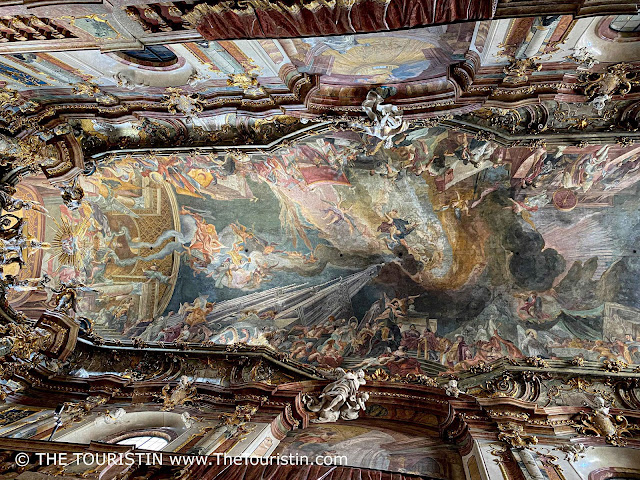


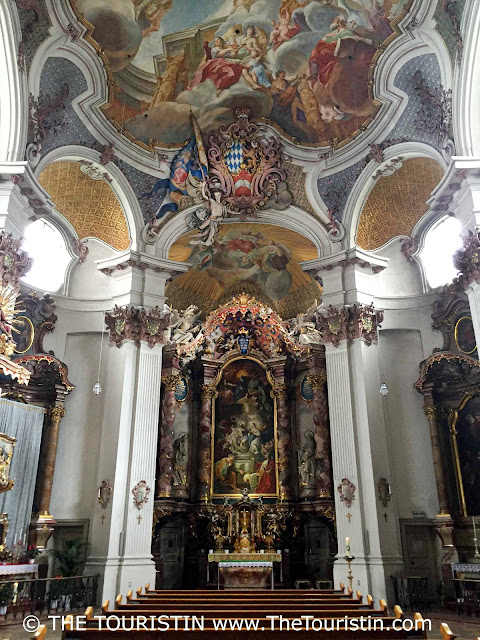








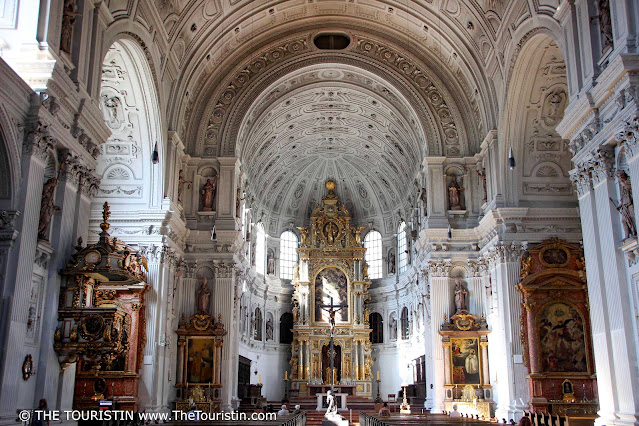



.jpg)
.JPG)
.jpg)




